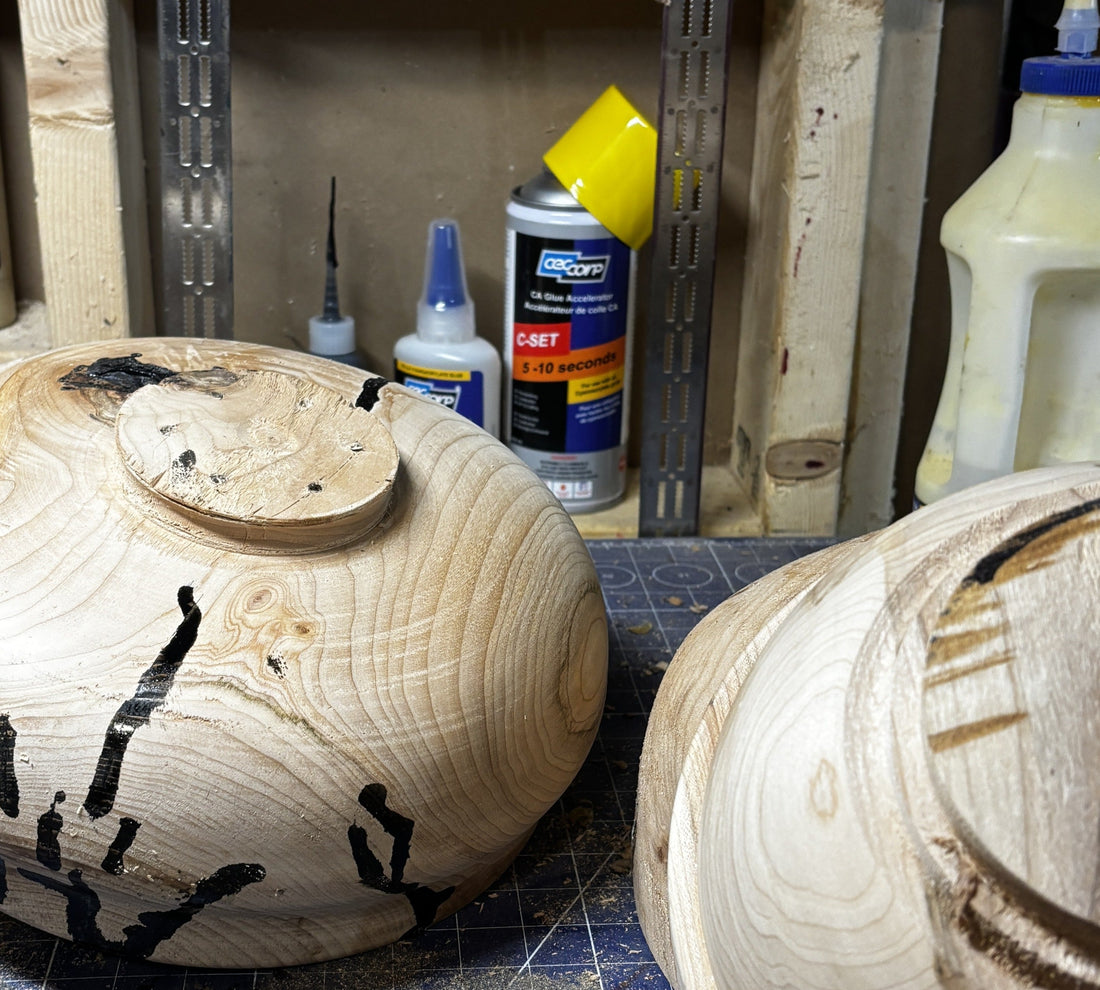
Applying Kintsugi Techniques to Wood Bowl Making Brings Unique Results
Applying the principles and techniques of Kintsugi to wood bowl making and wood restoration can create unique, beautiful, and meaningful pieces. Here's a detailed exploration of how these techniques can be adapted:
Applying Kintsugi Techniques to Wood Bowl Making and Wood Restoration
Introduction: Kintsugi, the Japanese art of repairing broken pottery with lacquer and precious metals, celebrates imperfections and the history of objects. This philosophy can be beautifully applied to wood bowl making and wood restoration, transforming damaged or broken wooden items into stunning works of art that tell a story.
The Process:
-
Cleaning and Preparing the Wood:
- Just like in traditional Kintsugi, the first step is to clean the broken or damaged wood pieces thoroughly. This ensures that any dirt, dust, or old finishes are removed, allowing for a clean surface to work on.
- For wood bowls, this might involve sanding down rough edges and cleaning the surface with a gentle wood cleaner.
-
Reassembling the Pieces:
- Carefully reassemble the broken pieces of the wood bowl or wooden object. This step requires patience and precision to ensure that the pieces fit together as seamlessly as possible.
- Clamps or other tools may be used to hold the pieces in place while the adhesive sets.
-
Filling and Sealing the Cracks:
- Instead of using traditional Urushi lacquer, a suitable wood adhesive or epoxy can be used to fill and seal the cracks. Epoxy resin is particularly effective as it can be mixed with pigments or metallic powders to achieve the desired aesthetic.
- Apply the adhesive carefully, ensuring that it fills the cracks completely and bonds the pieces securely.

-
Applying Gold or Silver:
- Once the adhesive has set, the cracks can be highlighted with gold or silver powder.
- This can be done by mixing the powder with a clear epoxy resin and applying it over the sealed cracks.
- Alternatively, gold or silver leaf can be applied to the cracks for a more traditional Kintsugi look. This involves using a special adhesive to attach the leaf to the surface of the wood.
Philosophy: The philosophy of Kintsugi, which embraces imperfections and celebrates the history of an object, is particularly poignant when applied to wood restoration. Wooden items often have a rich history and character, and the process of repairing them with Kintsugi techniques adds to their story. The visible cracks and repairs become a testament to the object's resilience and beauty, rather than flaws to be hidden.
Examples of Application:
- Wood Bowls: Applying Kintsugi techniques to wood bowls can create stunning, one-of-a-kind pieces. The natural grain and texture of the wood, combined with the shimmering gold or silver cracks, result in a visually striking and meaningful object.
- Furniture Restoration: Kintsugi can also be applied to larger wooden items, such as furniture. A broken chair leg or a cracked tabletop can be repaired and highlighted with gold or silver, turning a damaged piece into a unique and valuable work of art.
- Decorative Items: Wooden decorative items, such as picture frames or sculptures, can benefit from Kintsugi techniques. The repaired cracks add character and beauty, making these items even more special.
Popularity and Resonance: The application of Kintsugi techniques to wood restoration resonates with the same principles that make traditional Kintsugi popular. It offers a message of resilience and renewal, inspiring people to see value in what others might discard. The beauty of imperfection and the celebration of an object's history are universal themes that appeal to many.
Conclusion: By applying Kintsugi techniques to wood bowl making and wood restoration, we can create beautiful, meaningful pieces that celebrate imperfections and tell a story. This approach not only preserves the history and character of wooden items but also transforms them into unique works of art that inspire and resonate with people.
Do you have a specific wood piece in mind that you'd like to restore using these techniques? 😊
